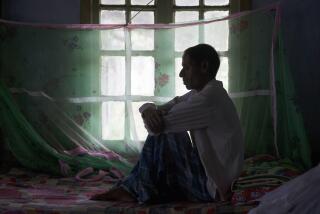Down, Maybe, but Not Dead : Drop in TB is reported, but the disease has shown that it can flare anew
- Share via
New government statistics show that last year tuberculosis cases in the United States declined significantly for the first time since 1985. But heartening as that may be, the warning of one prominent health official must be heeded: The decrease must not cause the nation to be “lulled into complacency.”
Such complacency already happened once. In the mid-1980s, TB cases fell to a historical low of 22,210, from 84,000 in 1953. Federal, state and local health agencies, confident that TB largely had been neutralized, made a shortsighted decision: to slash resources devoted to fighting the infectious scourge.
Victory, as it turned out, was short-lived. Because even as TB declined in the United States, it remained the deadliest infectious disease in the rest of the world, claiming as many as 3 million lives annually. Before long, there was another TB surge, linked with increases in immigration, AIDS and homelessness.
TB attacks the lungs and is spread through air by coughing or sneezing. One contagious TB carrier generally infects three or four other people before the disease is diagnosed, authorities say.
The new TB epidemic has presented health officials with daunting problems. Now doctors must contend with drug-resistant strains in one of every six new cases. In addition, more carriers are home- less and thus more difficult for public health agencies to monitor.
As for the new figures, doctors at the U.S. Centers for Disease Control warn that 1993’s national decline of 5%--3% in California, the state with the most TB cases--could have simply been the result of underreporting. So government officials, and that includes county boards of supervisors in Southern California, should be strongly cautioned against making any cuts in health funding for TB programs. Health education, particularly in immigrant communities, and mobile screening clinics and programs to monitor homeless patients need continued and proper funding.
The 1980s offer a crucial lesson in dealing with tuberculosis. America cannot afford to be overconfident again.
More to Read
Sign up for Essential California
The most important California stories and recommendations in your inbox every morning.
You may occasionally receive promotional content from the Los Angeles Times.













